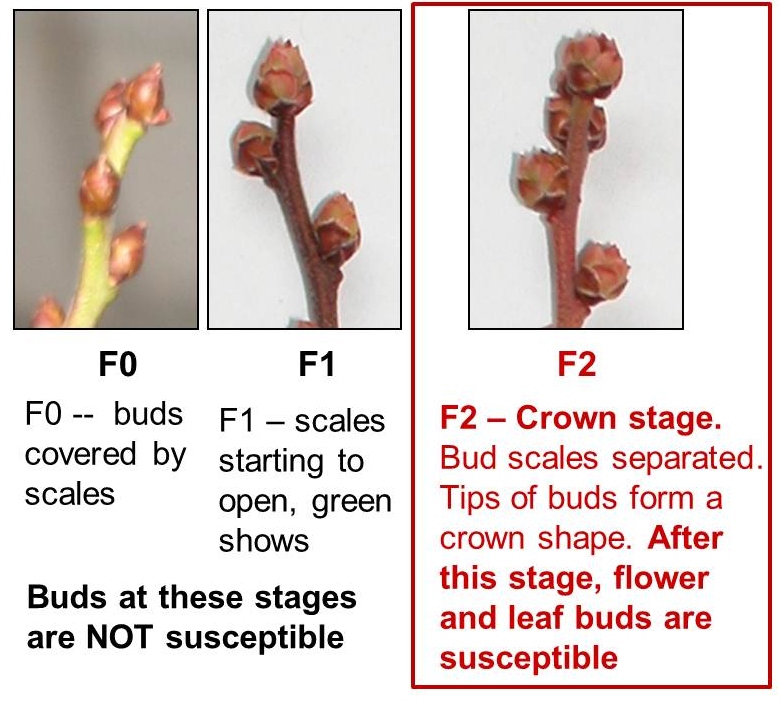Monilinia blight infection timing is upon us. As you are weighing the decision to make a fungicide application keep in mind we need these three conditions for disease to occur:
1. Inoculum presence - mature
sporulating apothecia cups
2. Susceptible host at the
correct bud development stage – bud scales separating in flower buds (F2 stage)
3. Suitable weather conditions –
long wet periods at relatively warm temperatures.
If you need a little primer on Monilinia Blight and Mummy Berry, please take a few minutes to review this short video: Mummy
Berry Video.
In preparation for an infection period, make sure you have product on-hand.
Products with the active ingredient propiconozole (Pivot, Bumper, Tilt, Princeton, Fitness etc) can be applied after an infection event, providing up to 72 hour ‘back action’, in addition to being excellent protectants against future infections for 7-10 days after application. Quilt is listed as a preventative fungicide, but also displays systemic and curative properties. New to the list this year is Miravis Neo which contains groups 3+7+11.
A complete list of
registered products can be found by consulting the table below or by clicking
here
In this table the rating
of 3 provides excellent control.
Observations taken from Waterville to Aylesford:
Newly emerged apothecia have been observed sporulating.
Spray timings should target 40% of buds at F2 stage with
active apothecia to give fungicide coverage through periods of free
moisture.
On more advanced sites, it was possible that there may have been
an infection period with Saturday night's precipitation. If growers believe
this was the case, they can rely on a group 3's back action if they spray right
away.
With only a small amount of moisture in the forecast and the earliness of the development stage, I believe there is little risk of infection. Keep in mind both the development and the forecast can change very quickly and growers should remain prepared to react as the forecast is u



